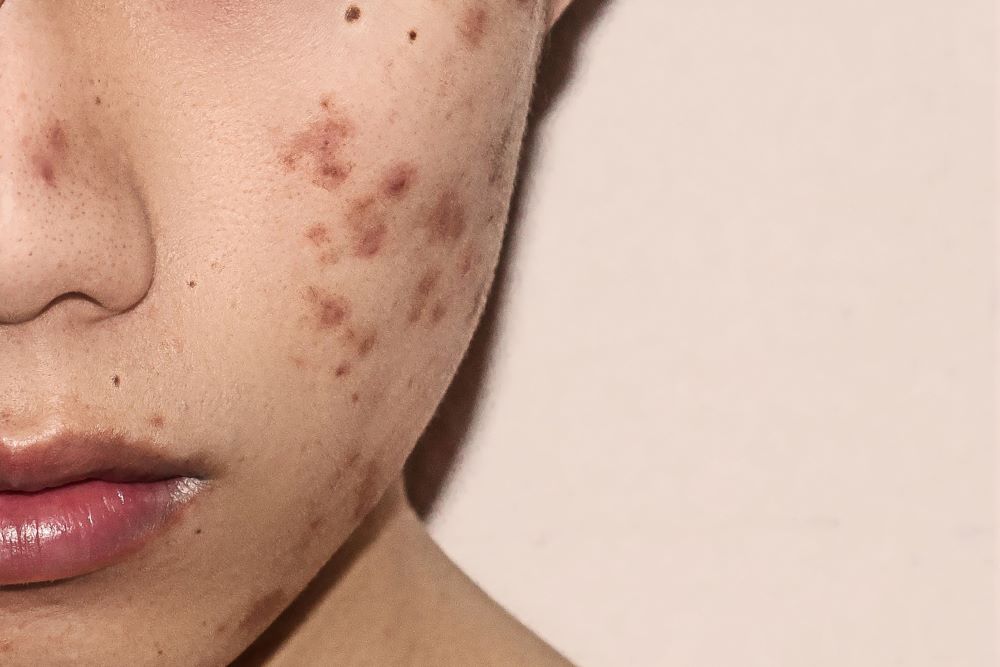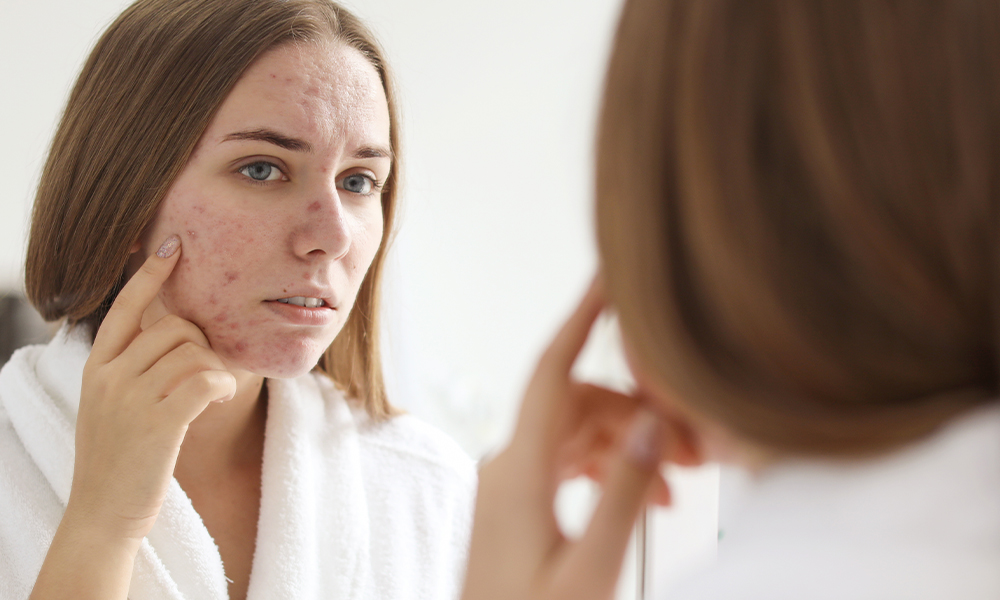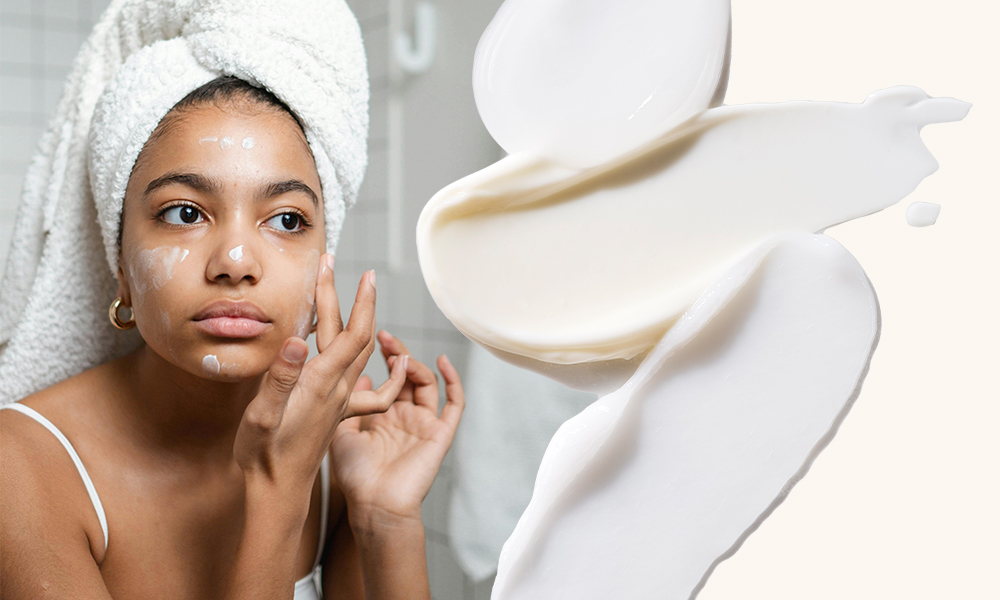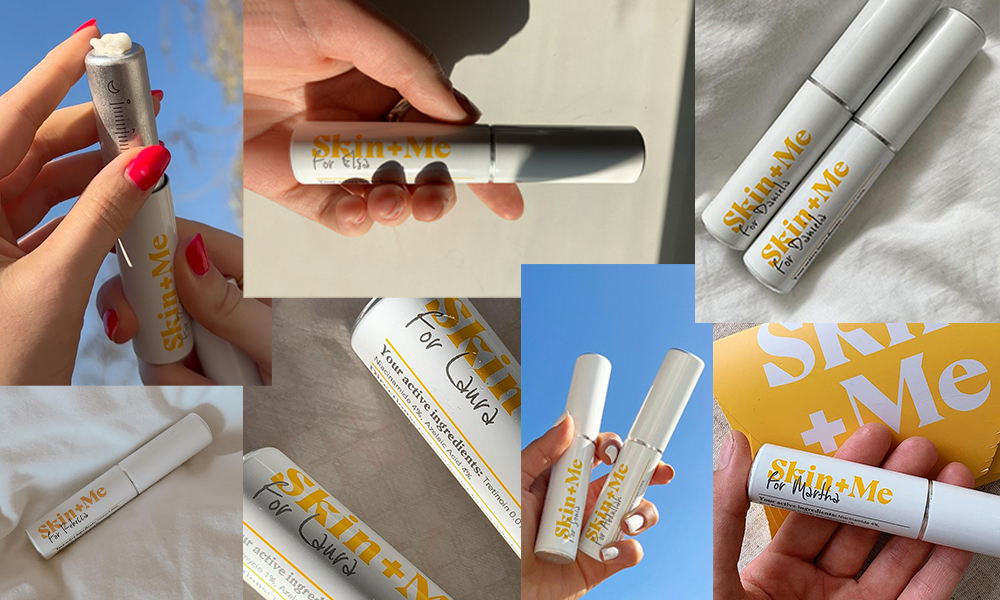Ask A Dermatologist: Do I Have Acne Or Rosacea?

Link to share article here:
Ask A Dermatologist: How To Heal and Prevent Acne Scars
Acne scarring is one of the symptoms of acne that can remain, long after you’ve managed to control your breakouts. It’s a complex issue with lots of variants that all need to be treated in different ways.
We asked our Consultant Dermatologist, Dr Malvina Cunningham, to explain the different types of acne scarring, how to identify each and the conditions scarring can often be confused with. Our goal is to make your journey a smooth one, so let’s clear things up.
How common is acne scarring?
Acne is a common skin condition. It’s estimated that 30% of people affected by acne will develop scarring, depending on the type of acne they experience and their genetic predisposal to scarring.
Acne scarring is more common with certain types of acne. Nodular and cystic acne are the most likely to cause scarring. However, scarring can occur with any type of acne, especially if the skin is picked or scratched which prevents spots from healing.
Nodular and cystic acne and their symptoms
Nodular acne can be identified as hard and painful acne deep under the skin. Spots generally don’t develop a white head and will often remain under the skin and very hard. Cystic acne resembles boils, is generally very painful to the touch and can be filled with pus.
Acne scarring can have a profound impact on mental health making it important to address early. Dr Malvina explains, “If you have acne scarring we advise you seek medical input from a dermatologist to ensure any remaining acne is treated effectively before scar treatment begins.”
What are the different types of acne scars?
The two main groups of acne scarring are:
🔴 Scarring where tissue is lost, leading to indentations or depressions of the skin.
🔴 Scarring that causes scar tissue formation, leading to raised scars on the skin, called hypertrophic or keloid scarring.
These types of scarring can be further divided into other categories of acne scars.
Indentations or depressions
⚡ Ice pick scars: These are small, and are typically narrow but deep scars.
⚡ Box scars: These are broader than ice pick scars, but still have sharp borders and are deep.
⚡ Rolling scars: These are broader scars but with sloping edges.
⚡ Atrophic scars: These shallower than other indentation scars and thin.
Hypertrophic scarring and keloid scarring:
⚡ Hypertrophic scarring and keloid scarring: Hypertrophic scarring appears as thickened elevated scars caused by excessive scar tissue formation. If you run your finger over the scar it feels raised compared to the rest of the skin.
⚡ Keloid scarring: This is one step further than hypertrophic scarring and appears as lumps or nodules made from scar tissue. It is particularly common over the back, chest, shoulders and lower face. It’s more often seen in darker skin tones.
How can I treat acne scars?
Dr Malvina explains, “Acne scars can be difficult to treat and it can be very expensive to do. Even if scarring is mild you should seek medical treatment early. The scarring will progress so the aim is to treat but also to prevent further scarring. Dermatologists often treat acne that causes scarring more aggressively even if it’s mild acne to prevent any further scarring.”
Dr Malvina also recommends when it comes to scarring you should go straight to the experts “Don’t waste time on over the counter products that don’t target true scarring effectively.”
It’s crucial to treat the acne first, to prevent further skin damage. Only then can you treat the scarring directly afterward.
The right treatment will be based on the type of scarring experienced. Treatments range from topical to procedures and surgery. Dr Malvina says, “It’s important to realise that scar treatment can be difficult and it takes time to improve the skin. Not every method works for everyone and sometimes methods need to be combined but also repeated. The end results are variable and it’s important to realise treatment is not perfect. Although it can significantly improve, skin will not revert to the way it looked before the breakouts.”
What are the best topical treatments for acne scarring?
The short answer? Retinoids. Dr Malvina explains, “Prescription retinoids are vitamin A derivatives. They include adapalene and tretinoin are a great treatment starting point for everyone. They’re effective acne treatments, but also treat any hyperpigmentation that can occur due to acne. Retinoids also stimulate collagen production and reduce inflammation. This helps to treat the scarring. It’s important to note that to see results will take months.”
As there is no evidence for over-the-counter retinoids effectively treating acne scarring, it’s best to opt for a prescription treatment immediately. And once you start on this journey, be patient and compassionate with yourself and your skin.
What other treatments are available for acne scarring?
There are other treatments available, but whether they will be effective will depend on what type of scarring you have, the extent of your scarring, and your skin type. Dr Malvina reminds us that “Scarring can’t be treated with just one session and often treatments have to be repeated and maintained over years”.
Acne scarring treatments include:
✨ Microdermabrasion
✨ Microneedling/PRP (Platelet Rich Plasma treatment)
✨ Laser resurfacing
✨ Fillers
✨ Subcision
✨ Excision of larger scars
How can I treat hypertrophic or keloid scars?
Hypertrophic and keloid scars should be treated differently to indentation acne scars, and always under the supervision of a dermatologist. The available treatments include:
✨ Topical steroids
✨ Silicone gel dressings
✨ Steroid injections/surgery
✨ Radiotherapy
How much do acne scarring treatments cost?
Cost for acne scarring treatments will vary – this is due to lots of different factors – the type and severity-level of the scarring, your location and the rates set by the practitioner.
No.23 Skin Clinic offer microneedling treatments with either a doctor or an aesthetic practitioner for £250-350*. Chain clinics like Therapie have salons across the UK and the Republic of Ireland, offering microneedling for £109* per session and sometimes hold discounts and sales. Dermatologists will also offer similar services, but pricing is usually set after an in-person consultation.
As always, do your research before undergoing any kind of treatment, and speak to a professional about any questions or concerns you may have.
What other symptoms of acne are mistaken for scarring?
Colour changes in the skin as a result of acne are often confused with acne scarring, but are actually very different. Dr Malvina explains these occur, “without any structural changes to the skin and are colour changes only”. These colour changes can be broadly divided into three types.
⭐ Hyperpigmentation: These are dark marks caused by an increase in the amount of melanin produced by the skin as a consequence of inflammation in acne. These appear as first red, then brown or dark brown spots over the site of previous acne. The key difference between hyperpigmentation and scarring is that darker spots are not associated with a change in the structure of the skin, the skin will also feel flat and lacks the usual indentation seen in true scarring.
⭐ Post-inflammatory erythema: This refers to the redness seen after active acne lesions resolve. The colour ranges from red to purple and the area feels flat when you run your finger across it.
⭐ Post-inflammatory hypopigmentation: These are white marks instead of dark marks and again the area feels flat.
How can I treat pigmentation changes due to acne?
Dr Malvina explains, “In contrast to scarring, changes in pigmentation post-acne can be treated with a number of topical treatments. An element of pigmentation will improve naturally with time but this can take up several years. Similarly to scarring treatments, any treatment that targets pigmentation should be used alongside an effective acne treatment to prevent further changes.”
“Sun protection is key as UV light will make any dark marks more noticeable. Azelaic acid can be a great treatment for post-inflammatory hyperpigmentation. Usually well-tolerated, it also works for acne so can be combined with other topical acne treatments such as retinoids, if they are tolerated.”
“Hydroquinone is the gold standard lightening agent and is usually available as a combination cream with a prescription-strength retinoid and a mild topical steroid. It’s usually used in short treatment periods after acne treatment has been completed. If topical treatment has failed chemical peels can be effective but these are associated with greater downtime for the skin to settle afterwards.”
How can I prevent acne scarring?
Don’t pick your spots! We know it’s tempting but picking, squeezing or gouguing out your spots could run the risk of disrupting the healing process and cause scars.
We say it all the time, but keep your skincare routine simple and effective. Treating the cause of the scarring (such as acne), is the best way to prevent them from appearing. Use the right combination of treatments consistently, and your scars will be a distant memory.
Wear sunscreen! A good quality, broad-spectrum and high factor SPF is the best tool in your armoury for allowing your scars to heal, so don’t skip it – even on rainy days.
Stick to gentle chemical exfoliation – no scrubbing or scraping, as this will only damage your skin barrier and irritate your skin – not a great environment for healing and recovery.
The bottom line
So there you have it. If you suspect acne scarring, consult a dermatologist. Treat the acne first and then the scarring second. Identify the type of acne and the type of scarring on your skin and get expert guidance to help you manage this. There’s a treatment out there. It’s simply a case of finding the most effective one for your unique skin.
Medical facts checked by Consultant Dermatologist, Dr Malvina Cunningham.
* Pricing accurate at the time this article was published. Please refer directly to clinics for up-to-date pricing.
New to Skin + Me? Get your first month of personalised skincare for £4.99 with promo code DOSE – complete our quick consultation here.
Looking for a routine refresh? Add the Dream Routine to your Skin + Me subscription.
In need of a restock? Head to The Skincare Shop for one-off purchases of your Routine Essentials.



